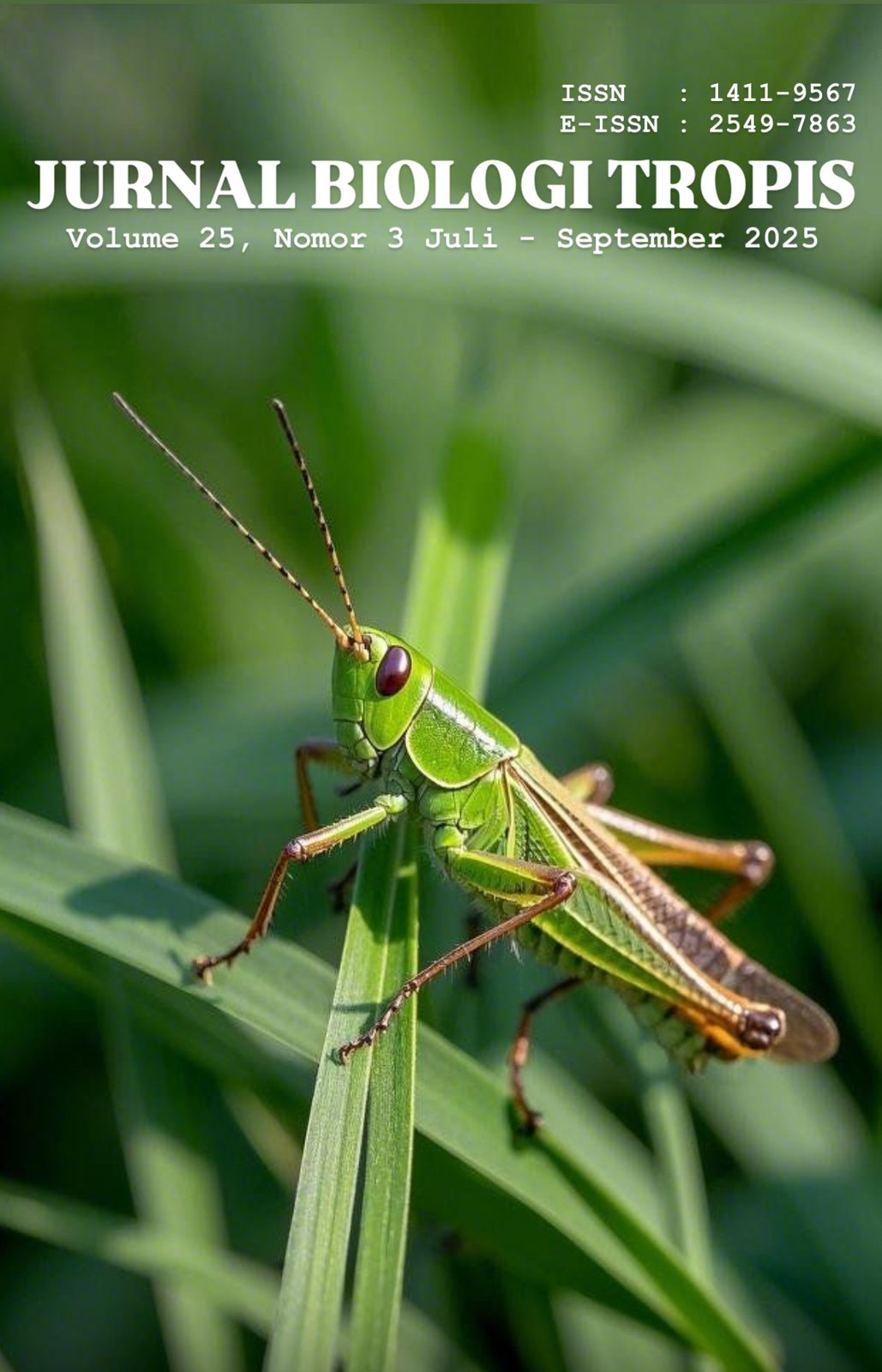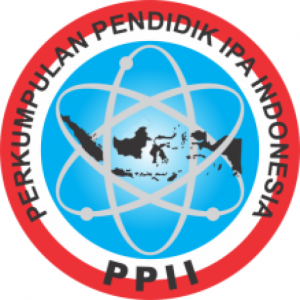Potential of Lactic Acid Bacteria Isolated from Fermented Tempe Food in Producing Fibrinolytic Enzymes
Authors
Nifsa Riski Amanda , Aerma Hastuty , Dwi Hilda Putri , Sulistiani SulistianiDOI:
10.29303/jbt.v25i3.9554Published:
2025-07-15Issue:
Vol. 25 No. 3 (2025): Juli-SeptemberKeywords:
Bacteria, enzyme, fibrinolytic, fermentation, tempeh.Articles
Downloads
How to Cite
Downloads
Metrics
Abstract
Cardiovascular disease is the leading cause of death worldwide, mainly due to blood vessel blockage caused by thrombus. Fibrinolytic enzymes are used to dissolve thrombus but are often limited by high production costs, low specificity, allergic reactions, and bleeding risks. As a safer alternative, bacteria from fermented foods offer several advantages, including low toxicity, cost-effective production, and high fibrin specificity, which reduces the risk of bleeding. This study investigated the potential and characteristics of fibrinolytic enzyme activity produced by lactic acid bacteria (LAB) isolated from tempeh. The fibrin plate method was used to identify LAB producing the enzyme, while enzyme activity was measured using the method of Varol et al. (2023), and protein concentration was analyzed using a modified Bradford test. Thirteen LAB isolates showed fibrinolytic activity, with isolate PG01-2B selected as the most promising. The highest enzyme production occurred on the second day, reaching 83.41 U/mL. Characterization showed activity with acetic acid buffer pH 6 (102.18 U/mL) and at 75 minutes incubation time (99 U/mL). These results indicate that LAB from tempeh has strong potential as a source of fibrinolytic enzymes and can function as an alternative therapeutic agent for thrombus-related cardiovascular diseases.
References
Aýun, Q., Muthiáh, S. N., & Sukmalara, D. (2023). Potensi bakteri asam laktat (BAL) dari jus tempe sebagai kandidat probiotik. Jurnal Al-Azhar Indonesia Seri Sains Dan Teknologi,8(2),171.https://doi.org/10.36722/sst.v8i2.1673
Bradford, M. M. (1976). A rapid and sensitive method for the quantitation of microgram quantities of protein utilizing the principle of protein-dye binding. Analytical Biochemistry, 72(1–2), 248-254. https://doi.org/10.1016/00032697(76)90527-3
Darmawati,Fauziah,P.N.,Firmansyah,Yuniastuti, A., Achmad, A.F., Mulyati, M., Laheng,S., Wiradanyani, N.K., Kurniawan, H.M., Sidik, E.A., Ismayanti,R., R. A. G. N. (2023). Biokimia (M. W. Yulianti Reina (ed.)). Tohar Media.
Efriwati, Suwanto, A., Rahayu, G., & Nuraida, L. (2013). Population dynamics of yeasts and lactic acid bacteria (LAB) during tempeh production. Hayati Journal of Biosciences,20(2),57 64.https://doi.org/10.4308/hjb.20.2.57
Fasoli, E., Righetti, P. G., Moltrasio, D., & D’Amato, A. (2015). Extensive heterogeneity of human urokinase, as detected by two-dimensional mapping. Analytical Chemisty, 87(3), 1509 1513. https://doi.org/10.1021/ac5037796
Halima Hanum, S., Toto Poernomo, A., . S., & Rosyidah, S. (2022). Effect of pH, temperature, and metalactivator on the activity of fibrinolytic enzymes produced by Pseudomonas aeruginosa Ts 6.4. Berkala Ilmiah Kimia Farmasi, 9(1), 9–12. https://doi.org/10.20473/bikfar.v9i1.40890
Hasan, A. E. Z., Artika, I. M., & Abidin, S. (2016). Produksi asam laktat dan pola pertumbuhan bakteri asam laktat dengan pemberian dosis rendah propolis Trigona spp asal Pandeglang Indonesia. Current Biochemistry, 1(3), 126 135. https://doi.org/10.29244/cb.1.3.126-135
Hazare, C., Bhagwat, P., Singh, S., & Pillai, S. (2024). Diverse origins of fibrinolytic enzymes: a comprehensive review. Heliyon, 10(5),e26668. https://doi.org/10.1016/j.heliyon.2024.e26668
Katz, J. M., & Tadi, P. (2022). Physiology, Plasminogen Activation. Statpearls Publishing
Khikmah, N., Astrika, N. R., & Widaryanti, B. (2024). Seleksi bakteri dengan aktivitas fibrinolitik yang diisolasi dari tanah rumah potong ayam. Sciscitatio, 5(1),1 8. https://doi.org/10.21460/sciscitatio.2024.51.159
Kumar, S. S., & Sabu, A. (2019). ). Fibrinolytic enzymes for thrombolytic therapy. In Therapeutic enzymes: function and clinical implications (pp. 345–381). https://doi.org/10.1007/978-981-13-7709-9_15
Mican, J., Toul, M., Bednar, D., & Damborsky, J. (2019). Structural biology and protein engineering of thrombolytics.Computational and Structural Biotechnology Journal, 17, 917 938. https://doi.org/10.1016/j.csbj.2019.06.023
Permatasari, E. A., Indrayati, A., & Kurniasari, F. (2024). Isolasi dan uji aktivitas fibrinolitik ekstrak enzim fibrinolitik bakteri yang berasal dari limbah cair rumah pemotongan ayam (rpa) di Karanganyar. Prepotif: Jurnal KesehatanMasyarakat,8(1),539 554. https://doi.org/10.31004/prepotif.v8i1.24140
Ramadhan, B., & Wikandari, P. R. (2021). Review Artikel: Aktivitas Enzim Amilase Dari Bakteri Asam Laktat (Karakteristik Dan Aplikasi). Unesa Journal of Chemistry,10(2),109 120.https://doi.org/10.26740/ujc.v10n2.p109-120
Rahmad, N., Ellina, A. D., Nurdina, N., & Wardani, R. (2022). Pengaruh latihan aktifitas rehabilitasi jantung fase II terhadap tingkat kebugaran dan daya tahan pasien penyakit jantung koroner. Jurnal Penelitian Kesehatan.13(4),1057 1062.https://doi.org/10.35790/msj.v7i2.6081
Sada, A., Sugianto, N. E., & Poernomo, A. T. (2021). Produksi Enzim Fibrinolitik Tempe oleh Rhizopus oryzae FNCC 6078. Berkala Ilmiah Kimia Farmasi, 8(1), 1. https://doi.org/10.20473/bikfar.v8i1.31202
Sajuthi, D., Suparto, I., . Y., & Praira, W. (2011). Purifikasi dan pencirian enzim protease fibrinolitik dari ekstrak jamur merang. Makara of Science Series, 14(2). https://doi.org/10.7454/mss.v14i2.727
Santosa, W. N., & Baharuddin, B. (2020). Penyakit jantung koroner dan antioksidan. Keluwih: Jurnal Kesehatan dan Kedokteran,1(2), 98 103.https://doi.org/10.24123/kesdok.v1i2.2566
Setyawati, E., Poernomo, T., & Sudjarwo, S. (2022). Screening and identification of fibrinolytic bacteria from tauco. Berkala Ilmiah Kimia Farmasi, 9(2), 45–50. https://doi.org/10.20473/bikfar.v9i2.42707
Susanti, R., Fibriana, F. (2018). Teknologi enzim. Andi Publisher.
Varol, A., Albayrak, S., Ozkan, H., Demir, Y., Taskin, M., & Adiguzel, A. (2023). Production, purification and characterization of novel fibrinolytic enzyme from Bacillus atrophaeus V4. Biologia,78(2),591 600. https://doi.org/10.1007/s11756-022-01281-7
Vijayaraghavan, P., Rajendran, P., Vincent, S. G. P., Arun, A., Al-Dhabi, N. A., Arasu, M. V., Kwon, O. Y., & Kim, Y. O. (2017). Novel sequential screening and enhanced production of fibrinolytic enzyme by Bacillus sp. IND12 using response surface methodology in solid-state fermentation. BioMed Research International, 2017. https://doi.org/10.1155/2017/3909657
Wang, S.-H., Deng, Z.-H., Li, Q., Ge, X., Bo, Q., Liu, J.-K., Cui, J., Jiang, X., Liu, J., Zhang, L., & Hong, M. (2011). A novel alkaline serine protease with fibrinolytic activity from the polychaete, Neanthes japonica. Comparative Biochemistry and Physiology B,159(1),18 25. https://doi.org/10.1016/J.CBPB.2011.01.004
License
Copyright (c) 2025 Nifsa RIski Amanda, Aerma Hastuty, Dwi Hilda Putri, Sulistiani Sulistiani

This work is licensed under a Creative Commons Attribution 4.0 International License.

Jurnal Biologi Tropis is licensed under a Creative Commons Attribution 4.0 International License.
The copyright of the received article shall be assigned to the author as the owner of the paper. The intended copyright includes the right to publish the article in various forms (including reprints). The journal maintains the publishing rights to the published articles.
Authors are permitted to disseminate published articles by sharing the link/DOI of the article at the journal. Authors are allowed to use their articles for any legal purposes deemed necessary without written permission from the journal with an acknowledgment of initial publication to this journal.


























